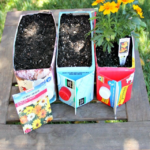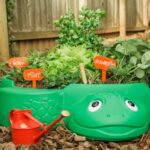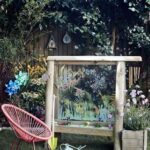Gardening is a fun and educational activity that can provide children with valuable life skills and a sense of responsibility. Whether you have a large backyard or just a small balcony, there are plenty of ways to get kids involved in gardening. Here are some creative garden ideas that will not only keep kids entertained, but also help them develop a love for nature and healthy eating.
One great way to get kids excited about gardening is to create a sensory garden. This type of garden includes plants that stimulate all five senses, such as fragrant herbs, colorful flowers, and interesting textures. Kids can touch, smell, taste, and observe the plants, making it a truly immersive experience. Sensory gardens can also be a therapeutic space for children with sensory processing disorders.
Another fun idea is to create a fairy garden with your kids. This whimsical mini garden can include tiny houses, fairy figurines, and miniature plants. Kids can use their imagination to create a magical world for the fairies, and it’s a great way to encourage creative play and storytelling. Fairy gardens are also easy to maintain and can be set up in containers or small areas.
If you have a larger space, consider creating a vegetable garden with your kids. Growing their own fruits and vegetables can be a rewarding experience for children, and it’s a great way to teach them about where their food comes from. Kids can get involved in every step of the process, from planting seeds to harvesting the produce. They will learn about plant care, nutrition, and the importance of organic gardening practices.
To add an element of fun to your garden, incorporate some garden art projects for kids. They can paint rocks, make bird feeders, or create their own garden markers using popsicle sticks and paint. By integrating art into gardening, kids can express their creativity and personalize their outdoor space. These projects can also serve as decorations for the garden and add a personal touch.
To attract wildlife to your garden and teach kids about biodiversity, consider planting a pollinator garden. Choose plants that attract bees, butterflies, and other beneficial insects, such as lavender, sunflowers, and coneflowers. Kids can learn about the role of pollinators in the ecosystem and observe these insects up close. A pollinator garden can also help support local wildlife and promote a healthy environment.
Finally, don’t forget to create a dedicated space for kids to play and relax in the garden. Set up a cozy seating area with comfortable cushions, a small table for activities, and maybe even a hammock for lounging. This space can serve as a retreat for kids to read, draw, or simply enjoy the outdoors. By creating a welcoming and inviting garden, you can encourage kids to spend more time outside and foster a love for nature that will last a lifetime.










